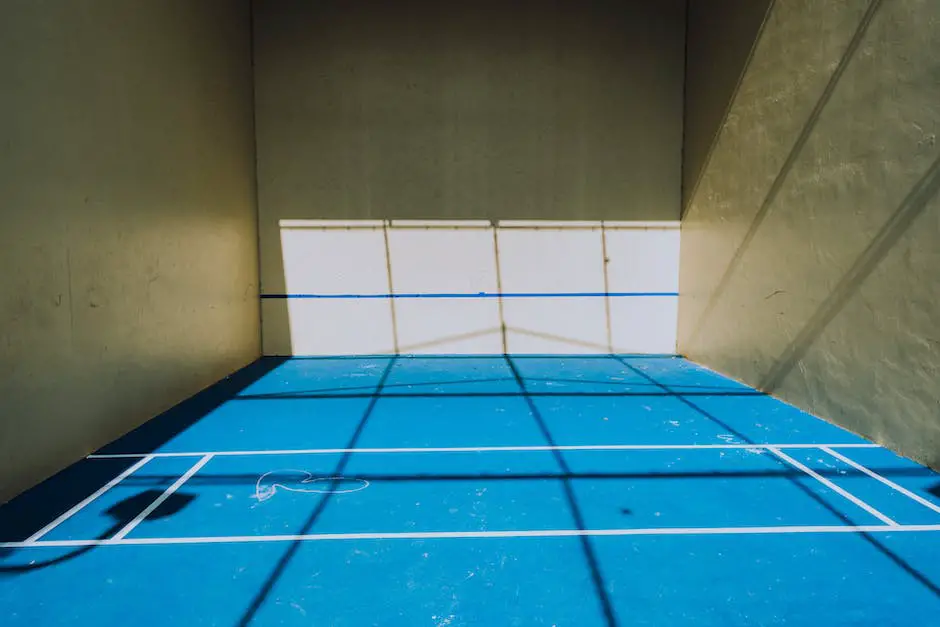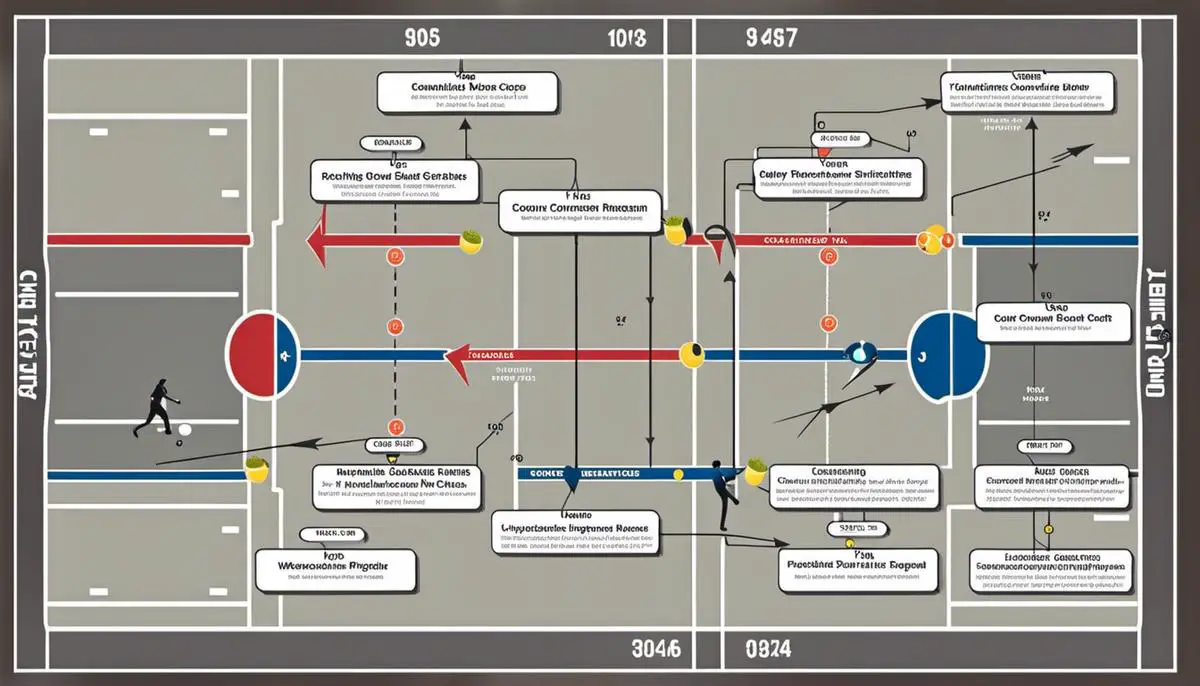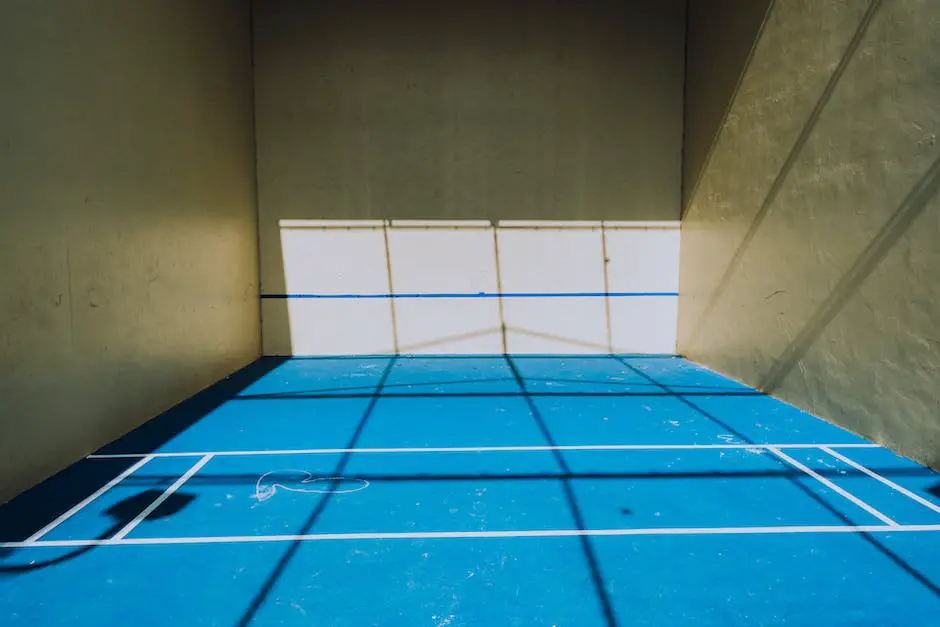Whether you’re a beginner stumbling upon the world of pickleball for the first time or a seasoned player looking to advance your skills, this comprehensive guide is dedicated to improving every facet of your game. Like any sport, mastering pickleball requires not only understanding the basic rules and jargon, but also developing effective techniques, strategies, and routine practice to hone your prowess. Here, we aim to cover fundamentals like the scoring system, key terminologies, and appropriate equipment. In addition, we delve into the essential skills of serving, lobbing, positioning, and more, and how regular practice and drills can elevate your game.
Understanding the Fundamentals
Understanding Pickleball Fundamentals: Know The Game
Pickleball combines elements from tennis, badminton, and ping-pong. It is typically played on a badminton-sized court with the net set to a height of 34 inches. Players use paddles made of wood or composite materials to hit a perforated polymer ball over the net. The sport’s rules and game structure make it accessible and enjoyable for players of any age or skill level, while also allowing room for improvement and competition.
The Basic Rules of Pickleball
Pickleball is a game of serving and returning. The game begins with the right-hand court player serving diagonally. Further, players must let the ball bounce once on each side before volleys are allowed. Failure to do so results in a fault, which can cause a loss of serve or point loss in certain cases. Serving continues until a fault is committed. Moreover, understand that only the serving side can score points.
The Jargon of Pickleball
Every sport has its own unique terminology, and pickleball is no different. Here are some key terms to know:
- Serve – The action that starts each play.
- Fault – An action that violates the rules.
- Volley – Hitting the ball before it bounces.
- Dink – A soft shot that is intended to arc over the net and land within the non-volley zone.
- Non-Volley Zone – The seven-foot area on both sides of the net. No volleying is allowed here.
- Poach – Hitting a ball that would normally be played by your partner.
Understanding Pickleball Scoring System
Pickleball is usually played to 11 points, and the win must be by at least two points. When serving, the score is called with three numbers: the server’s score, the receiver’s score, and the server number (either 1 or 2). Games can be played as singles or doubles.
Pickleball Equipment
The two main pieces of equipment in pickleball are the paddle and the ball. Most paddles are made from lightweight composite materials, such as aluminum or graphite, and they’re slightly larger than ping-pong paddles. The pickleball itself is comparable to a whiffle ball, but it’s slightly smaller. Players also require proper shoes that offer good support and are appropriate for a court surface. Wearing a quality pair of athletic shoes can greatly reduce the risk of slips and falls on the court.
Through understanding the basic rules, familiarizing with the jargon, mastering the scoring system and recognizing the equipment used in the game, you can build a solid foundation in pickleball. This will prepare you adequately before you dive into more complex strategies and techniques.

Techniques and Strategies
Serving Technique
The serve is arguably one of the most important aspects of pickleball. To serve proficiently, you need to use an underhand stroke and make contact with the ball at or below your waist level. Remember, the serve must be hit diagonally across to the opponent’s service court. Power isn’t as crucial as accuracy. Your aim should be to make your serve deep into the court, which can push your opponent back and give you an opportunity to move to the net.
Return of Serve Strategy
When returning a serve in pickleball, the primary goal should be to get the ball deep in the server’s side of the court, effectively making it more challenging for them to execute a solid third shot. A deeper return can also buy you time to approach the net. It’s essential to avoid volleying the return of serve since it allows your opponent to advance to the net more quickly.
Mastering the Art of Dinking
Dinking is a soft shot that is aimed at the opponent’s non-volley zone (or kitchen) in order to keep them at bay. This requires precision and control rather than power. The key is to make your dink shots just high enough to go over the net, but short enough that your opponent can’t volley it back.
Lobbing the Ball Effectively
A successful lob can move opponents away from the net, giving you time to reposition. The lob should be high enough to get over an opponent’s reach, and ideally land near the baseline. It’s a risky shot, though. If not done right, it can set up an easy smash for the opponent. Lob when you see your opponent’s weakness or when they are too close to the net.
Positioning and Footwork
Understanding where to position yourself on the pickleball court is crucial. Beginners often make the mistake of staying back after serving or returning. Instead, after these actions, move up to the non-volley zone line. Footwork, too, plays a pivotal role. Rather than reaching to hit balls, move your feet to maintain balance and control.
Planning Your Shots and Game Strategies
Always have a plan or strategy behind each shot. Try to anticipate your opponent’s return and position yourself accordingly. Vary your shots to keep your rivals guessing and off balance. Aim for the center of the court to reduce your opponent’s angles of return.
Improving Shot Accuracy
Improving shot accuracy requires practice. Rotate your torso along with your arm swing to increase accuracy. Watch the contact of your paddle with the ball to ensure that you’re hitting it squarely.
Strategic Gameplay Tactics
Adopt various techniques to outwit your opponents. This could involve switching up your serving speed or playing a net game. Remember, doubles pickleball is about making the shot that is easiest for your team to handle and most challenging for your opponents. Aim low in order to force your opponent to hit upwards, giving you a better shot to return.
Remember, the key to improving your pickleball skills lies in understanding the intricacies of these key techniques and the strategic aspects of gameplay. Dedicate time to practice each of these components, and you’ll soon see improvements in your overall performance.

Regular Practice & Drills
Understanding Pickleball Basics
Pickleball, a blend of tennis, badminton, and ping-pong, offers an engaging and easy-to-understand gameplay. The basic skills you’d need in Pickleball are serving, volleying, and footwork. Regular practice ingrains these techniques, making your responses instinctual and improving your competitive edge.
Regular Practice Sessions
Regularly hitting the court for practice sessions is indispensable for mastery of this sport. Aim for consistency rather than intensity when starting. It would be beneficial if you can practice a minimum of three times a week, around 30 minutes each time. Focus on the basic skills such as serves, returns, and volley shots each time to gradually improve your overall game.
Serving Drills
Serving in Pickleball, unlike tennis, is a bit different. The serve should be delivered underhand with your paddle below your waist, and the ball needs to land in the diagonal service box. Start by practicing serving from both sides of the court aiming to get the ball deep into the opponent’s court close to the baseline.
Volleying Drills
Volleying in Pickleball refers to hitting the ball before it bounces. This can allow you to keep your opponent off balance and control the pace of the game. To practice volleying, aim to strike the ball out of the air after a teammate’s return bounce. Keep the paddle face open and drive the handle forward to contact the ball.
Footwork Drills
In Pickleball, you’re required to move around the court quickly and efficiently. A good way to practice footwork is by performing ladder drills. Lay a flat ladder or draw one on the ground and practice moving through each square as quickly and precisely as possible. This will help increase your agility and foot speed for better movement around the court.
Playing Actual Games
Once you’ve spent a lot of time on these drills, it’s vital to play actual games. Try to apply the skills you’ve learned during your practice sessions. Try to focus on strategy, recovery time after the hit, anticipation of the opponent’s shots, and controlling the pace of the game. This will not only help you apply the skills you’ve been working on, but also understand how they come into play during actual matches.
Keeping Track of Improvement
Tracking your progress over time can provide a clear picture of your improvement. Keep a journal to record your wins, losses, and the areas you need to work on. This can help you focus on honed practice of those weak areas during your training sessions.
Remember, mastering any sport requires patience, dedication, and consistent effort. So keep practicing and enjoy your growth in the game of Pickleball!

It is certain that with dedication and consistent effort, anyone can improve their pickleball skills and broaden their tactical game. Understanding the fundamentals forms a crucial base, and in-depth training in techniques and strategies propels one’s competency to new heights. Consistent practice, combined with targeted drills, not only refines these learned skills but also enhances greater understanding of the game. So, let your journey to pickleball mastery begin, ignite your sportive spirit, and relish the thrill of vastly improving your game.